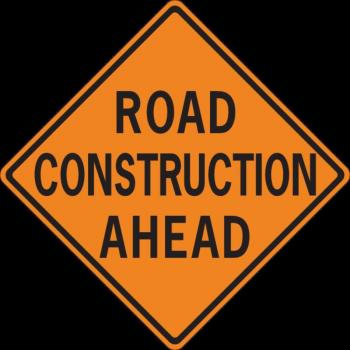Keeping Road Construction Workers Safe
April 11, 2019

Road construction season is fast upon us. Larry , Daryl and Daryl (https://www.youtube.com/watch?v=-L7UAyQ83Yg) will be out by those orange barrels risking their lives both from the traffic they are directing and their co-workers and on-site heavy equipment.
To keep everyone safe:
· Provide advance warning to motorists
· Wear high-visibility retro-reflective clothing
· Identify and maintain a safe location while working in or near moving traffic
To keep Larry safe while directing traffic:
· Provide adequate lighting to the flagger station during night work
· Provide adequate training to the flagger Larry
· When a flashlight is used for flagging in an emergency at night in a non-illuminated flagger station, the flagger shall hold the flashlight in the left hand, shall hold the paddle or flag in the right hand and shall use the flashlight in the following manner to control approaching road users:
· To inform road users to stop, the flagger shall hold the flashlight with the left arm extended and pointed down toward the ground, and then shall slowly wave the flashlight in front of the body in a slow arc from left to right such that the arc reaches no farther than 45 degrees from vertical.
· To inform road users to proceed, the flagger shall point the flashlight at the vehicle’s bumper, slowly aim the flashlight toward the open lane, then hold the flashlight in that position. The flagger shall not wave the flashlight.
· To alert or slow traffic, the flagger shall point the flashlight toward oncoming traffic and quickly wave the flashlight in a figure eight motion.
Traffic Control at Intersections can pose unique hazards because traffic enters from multiple directions at the same time. In order to direct traffic safely Daryl should:
· Establish a position that will allow him to control the intersection yet is safe. He should establish authority in stance and demeanor where he can see and be seen in his high-visibility retroreflective clothing.
· Give clear uniform signals so drivers and pedestrians know what you want them to do using established hand signal techniques for stopping traffic, starting traffic, and guiding traffic movements
· Direct all turns, anticipating congestion, watching intersection exits and checking for breaks in traffic
· Make sure vehicles complete their turns without blocking an intersection, and never let a vehicle enter an intersection that does not have room to exit
Keeping Larry, Daryl and Daryl safe from their coworkers is also a challenge. Be sure that they:
· Wear high-visibility clothing
· Be aware of blind areas around vehicles and equipment
· Keep eye contact and positive communication with equipment operators
Coworkers should:
· Avoid backing vehicles and equipment whenever possible
· Stop driving the vehicle or equipment if worker-on-foot is out of view
Employers can help by setting up work site plans to:
· Control movement of equipment and vehicles through an internal traffic control plan (such as a plan that coordinates the flow of vehicles, equipment, and workers operating in close proximity)
· Create a simple drawing depicting movement of workers, vehicles, and equipment at the work site
· Make a checklist of site-specific hazards (for example downed power line, damaged culvert)
· Separate workers-on-foot from moving vehicles and equipment by setting up equipment routes and worker-free zones (for example keep workers out of equipment paths)
· Share on-site traffic control plan with workers-on-foot, truck and equipment operators, and anyone entering the site
References: https://www.youtube.com/watch?v=-L7UAyQ83Yg
(https://www.cdc.gov/niosh/topics/highwayworkzones/default.html/)
(https://mutcd.fhwa.dot.gov/pdfs/2009r1r2/part6.pdf) (https://www.nap.edu/catalog/22723/a-guidebook-for-nighttime-construction-impacts-on-safetyquality-and-productivity)
(https://www.cdc.gov/niosh/topics/highwayworkzones/bad/default.html) in such vehicles and equipment make it hard to see other workers on the ground. Workers can take the following steps to reduce this hazard (https://www.cdc.gov/niosh/docs/2001- 128/pdfs/2001-128.pdf):